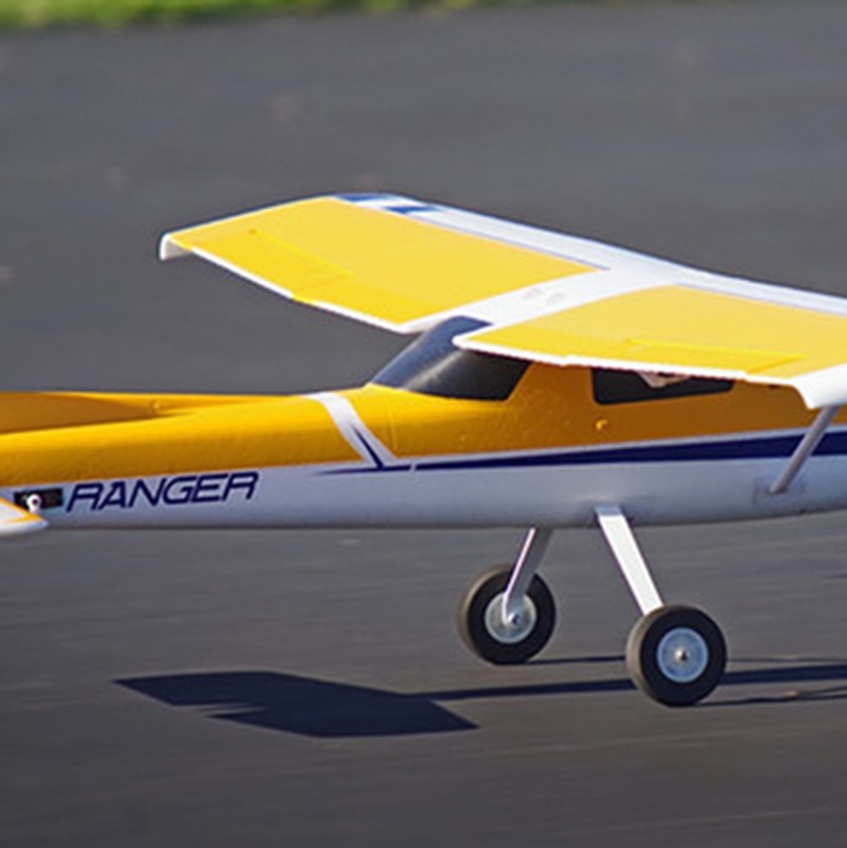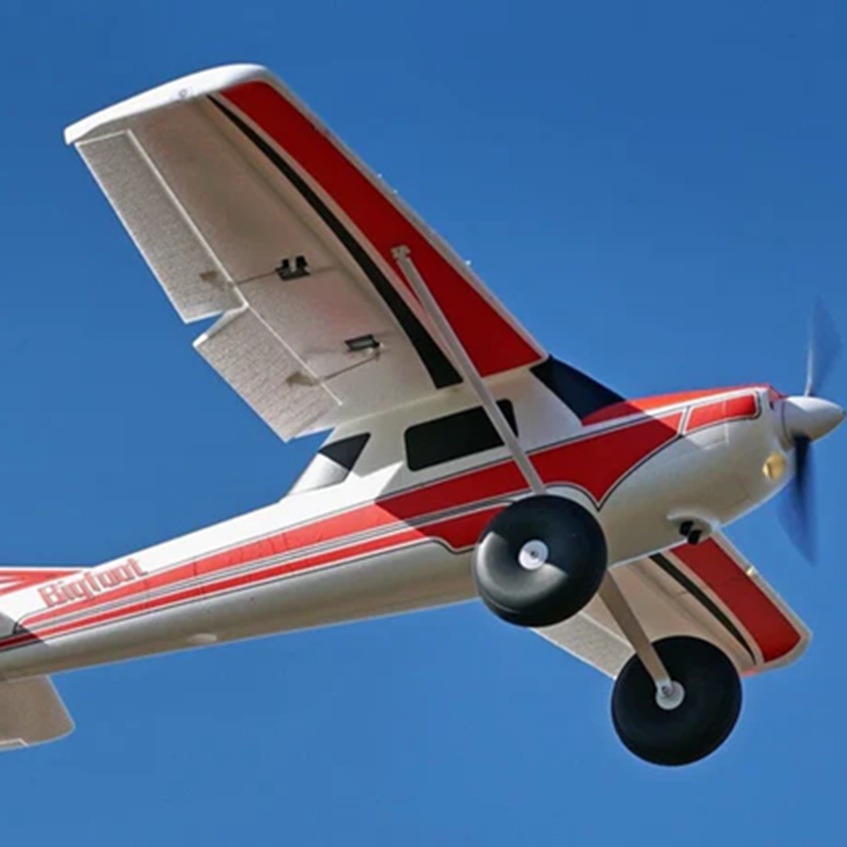Remember the first time a plane thundered overhead and you froze, neck craned, trying to follow it until it vanished into the bright sky? RC flying taps into that same tug at your chest, the mix of sound, motion, and control that makes your hands itch to steer something that actually leaves the ground.
You feel the throttle come alive, the wings bite into the air, and the world narrows to a smooth arc and a steady horizon that you shape with tiny inputs. If you love airplanes, you’ll love this little version of flight even more, because you get the takeoff, the turn, and the flare to a neat landing, all packed into a model you can carry under one arm.
How Do RC Planes Work?

An RC plane follows your inputs from a handheld transmitter. The receiver tells the motor how fast to spin and tells tiny motors called servos how far to move the control surfaces. Many realistic and user friendly remote airplanes also include a simple gyro that smooths out bumps from wind or twitchy thumbs. Power comes from a LiPo battery, and the propeller pulls the plane forward so the wings can do their job.
Think of the controls like this: the elevator tilts the nose up or down, the rudder points the nose left or right, and the ailerons roll the wings. You use throttle to set speed, then blend small stick moves to climb, turn, and line up a landing. The wings make lift as air flows over and under them, and the tail parts help you aim the plane where you want it to go. Foam airframes made from EPO or EPP help you learn because they handle rough landings and you can glue them back together.
Before each flight, do three quick checks: stand behind the plane and confirm all surfaces move the right way, set a timer so you don’t over-discharge the battery, and place the battery so the balance point sits where the manual shows. Keep your first flights in calm weather, use a wide field, and make gentle inputs.
What Types of Hobby RC Airplanes Are There?
You’ll see several build levels sold as kits and semi-kits, and each suits a different stage of your journey. While all of them are remote airplanes, they vary in how much work you do before takeoff and how much gear you need to add.
RTF (Ready To Fly)

RTF planes let you charge up and head to the field the same day. You get the aircraft, a matched transmitter, the receiver already installed, plus a battery and a charger, so you avoid hunting for parts that might not play nicely together. This path is great if you want a smooth start, or if you’re buying a gift and you’re unsure what radio gear someone owns. You still need to do smart basics: set your control throws per the manual, pick a calm day for the maiden, and use a flying field with open space.
Many RTF trainers include beginner modes that limit bank and pitch to keep you from over-correcting, and you can toggle those limits off as you improve. You’ll still learn core skills like throttle control, gentle turns, and lining up a landing approach, but the setup won’t slow you down. If you plan to stick with the hobby, treat the included transmitter as a stepping stone; it works fine to start, yet a higher-quality programmable radio later will give you a better feel and room to grow.
BNF (Bind & Fly)
BNF planes arrive built with a receiver pre-installed, but you supply the transmitter. You “bind” the plane to your radio in a short pairing step, then set basic model settings like channel order, rates, and expo. This route makes sense if you already own a good radio and want to keep your controls familiar from plane to plane.
It also saves weight and clutter in your hangar because you don’t stack up beginner radios you’ll never use again. Budget for batteries and a charger that match the plane’s specs, and add a few spares so you can enjoy back-to-back flights. You’ll still benefit from safety checks: confirm the failsafe cuts throttle and centres controls, verify control directions, and do a range test before the first toss. BNF also opens a wide catalogue of models, from slow flyers to fast sport ships, so you can step up in speed and skill without learning a new radio each time.
PNP (Plug & Play)
![Flightline F8F-1 Bearcat 1200mm 47in Wingspan PNP [FLW206P]](https://coffeechat.com.au/wp-content/uploads/2025/10/flightline-f8f-1-bearcat-1200mm-47in-wingspan-pnp-flw206p-1167688075.jpg)
PNP means the airframe and power system are ready, but you plug in your own receiver and provide a transmitter and batteries. Think of it as a quick setup for pilots who already have radio gear they like. You slide in your receiver, connect the servo leads, set your endpoints and rates, and you’re nearly set. This format gives you freedom to use the protocol you prefer and to reuse chargers and packs you already own.
It also encourages cleaner builds: keep your wires tidy, secure the receiver with foam tape, and route antennas away from carbon or metal so you keep a solid signal. Compared to BNF, PNP makes you choose the exact receiver features you want, like telemetry or stabilisation. If you enjoy tweaking and you want consistent controls across your fleet, PNP hits a sweet spot: less work than a full build, more control than an all-in-one package.
ARF (Almost Ready To Fly)
ARF kits bring you a finished airframe with the tough work done, yet you install your motor, ESC, servos, and radio gear. This path is popular for larger models or special designs where you care about component quality and layout. You pick servo torque to match control surface size, size your motor and prop to the plane’s mass, and choose a battery that balances power and flight time.
Take your time on alignment: set your control horns close to hinge lines, centre your servos before installing arms, and keep your linkages slop-free. You’ll also set the centre of gravity by sliding the battery or adding small weights so the plane tracks true. ARF teaches you why each part matters and pays off with a plane that flies the way you like. It costs more time up front, but you avoid compromises and you can upgrade parts later without rebuilding everything.
RC Plane Builders Kits
Builder’s kits give you the joy of crafting an airplane from parts like balsa, light plywood, or foam sheets. You cut, pin, glue, sand, and cover, then install your electronics once the structure is straight and strong. This route asks for patience and basic workshop tools, but it rewards you with a model that feels truly yours.
Follow the plans, build on a flat board, and check alignment often so wings and tail sit square. Keep parts light by using thin glue lines and removing extra material where the plan allows. When you finish the airframe, choose electronics that suit the final mass: size the motor and prop for the current you want, match the ESC rating with margin, and pick a battery that keeps the centre of gravity within the recommended range.
![FlightLine P-51D Mustang 850mm Wingspan PNP [FLW101P]](https://coffeechat.com.au/wp-content/uploads/2025/10/flightline-p-51d-mustang-850mm-33-wingspan-pnp-motion-rc-35666552324281.jpg)

